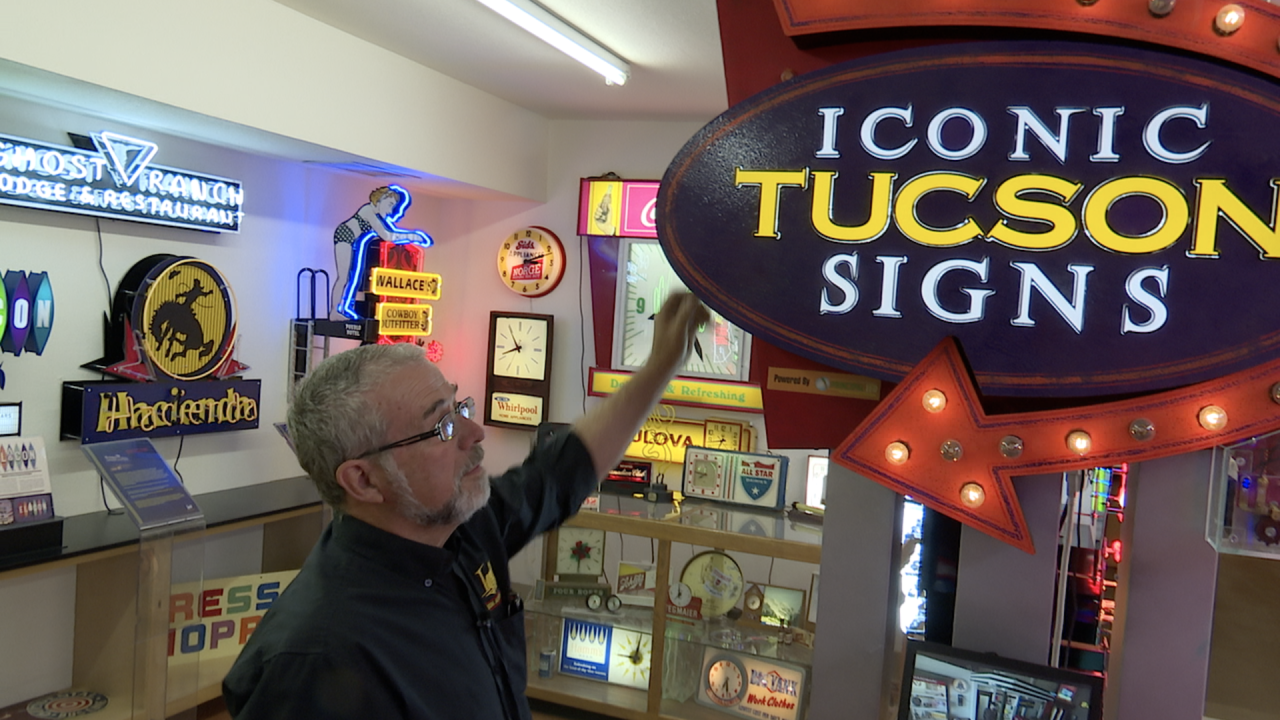TUCSON, Ariz. (KGUN) — We see them glow at night and evolve over time, but what happens after Tucson’s iconic signs or neon lights are taken down?
Many of them end up at the Ignite Sign Art Museum.
Owners Jude and Monica Cook also own Cook & Company Signmakers, a shop where they’ve been making signs in Tucson since the 1980s. Jude was previously a sign maker and business owner in Iowa.
“They’re just so cool,” he said of the signs. “It’s art. It’s skills. It’s craftsmanship… I don’t have a specific niche that I collect. If it’s cool, that’s what I get.”
The Cooks opened the museum in October of 2018 as a way to share their collection and preserve artistic work with ties to Tucson's or America's history.

The museum holds plastic signs, neon signs and seemingly everything in between. They range from small street signs to large marquees. There are also miniature replicas of some of Tucson’s more iconic signs.
Jude is so well connected that he loans and buys signs from other museums and collections around the country. He also gets calls from the community and finds them online.
Though many of the signs come from outside Tucson storefronts, some several decades old.
“Through my sign company, we take down a lot of signs,” Cook explained. “And I’ve kept them. And so a lot of stuff are signs they took down, customer didn’t want ‘em anymore. So I’m supposed to dispose of ‘em so I just hold on to them… They get taken down, they get set on the ground, they’ll just rot if you don’t do something with them.”
That’s why Jude leads a team of employees and volunteers who restore signs every week.
“As low as $3,000 or 4,000, upwards of $50,000,” Jude said of that restoration cost. “That’s anywhere from 10-12 hours to 50 to 70 to 100 hours.”
The work involved is often extensive, with signs being re-painted and re-lettered. The glass tubes used for neon signs are hand-bent after being heated at extreme temperatures.
For the small group of dedicated craftsmen, the painstaking process is part of their passion.
“No automation… it’s all hand work and one at a time, and I really appreciate that,” said Steve Justin, who works on signs at the museum and also gives guests glass tube-bending demonstrations.
“I’ve been having an absolute ball," he added. Jude and Monica are fantastic. They come originally form the Midwest. They’ve got that work ethic right down: constantly on to the next project or the next improvement or the next restoration project, or whatever. And I want to be involved.”
Cook says many of his visitors enjoy the nostalgic feeling they get inside the museum.
“The most interesting comment I get, and I didn’t expect it, was people come in and they thank us for what we’re doing,” he said. “People that actually remember these signs, ‘cause it’s part of their childhood, or part of their life, anyway, that we’ve saved a little piece of.”
Ignite Sign Art Museum is located at 331 S Olsen Avenue open between 10 a.m. - 4 p.m. Wednesday-Saturday.
----
STAY IN TOUCH WITH US ANYTIME, ANYWHERE
- Download our free app for Roku, FireTV, AppleTV, Alexa, and mobile devices.
- Sign up for daily newsletters emailed to you
- Like us on Facebook
- Follow us on Instagram
- Follow us on Twitter





